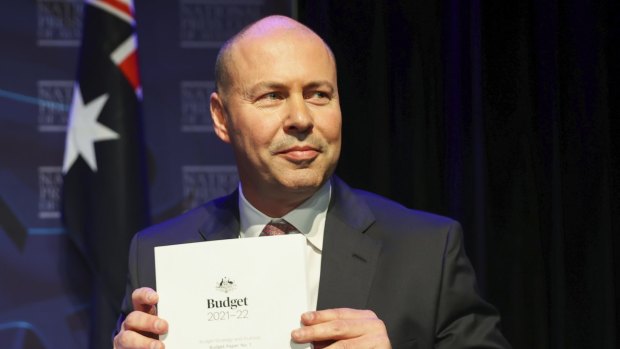This was published 2 years ago
Opinion
Why I love Josh Frydenberg’s budget in all its big-spending glory
Steven Hamilton
EconomistMuch of the reaction to last week’s budget has framed its big spending as fiscally reckless. That the government has outflanked Labor on the left. That the budget presages generations of budget deficits and a mountain of debt we’ll never pay off. A cadre of Liberal backbenchers and former treasurers are said to be up in arms.
I care more than most professional economists about fiscal discipline. I worry that if debt ratchets up, it may expose us in the decades ahead to serious risks. I like lower taxes, and I favour spending restraint. I think, in all sorts of areas, our government does too much. I worry about the steady sprawl of our state.

Treasurer Josh Frydenberg signalled seven months ago what the budget strategy would be.Credit: Alex Ellinghausen
And yet, when I unwrapped the budget papers last Tuesday, I gazed upon the rivers of red ink with a sense of relief. This budget, in all its big-spending glory, is in fact a mark of good fiscal management. I’m glad the Treasurer charted a responsible course out of the pandemic. And I’m dismayed he’s copping so much flak. I don’t want him to take away the wrong lessons.
Despite seemingly taking people by surprise, the approach in the budget was forewarned quite clearly in last year’s budget, released just seven months ago. In that budget, the government unveiled a whole new fiscal strategy, which evidently not a lot of people read. But it was an important moment in the history of Australian economic management.
It did two things. First, it distinguished between the approach the government would take in the short term amid the downturn versus in the medium to long term once the economy has returned to normal. Second, it set a trigger for when the short term would become the long term: when unemployment returns to a pre-crisis, non-inflationary level.
And deliver on this strategy is exactly what the Treasurer did last Tuesday. The unemployment rate is due to drop under 5 per cent in 2022-23, and then remain comfortably below it from 2023-24. So based on the government’s fiscal strategy, economic supports should remain until that time. And the budget still shows the deficit more than halving by 2024-25.
What’s unclear is exactly what critics would have had the government do instead. Is the fiscal strategy, set out last year, too cautious? Should the government not have extended tax relief for consumers and businesses to next financial year? Would they have been comfortable with many tens of thousands of additional people on welfare? Is full employment not a worthy goal?
A lot has been made of the fact that much of the new spending is permanent. Would critics not have plugged that $17 billion hole in the aged-care budget, a fraction of the amount recommended by the royal commission? There were certainly spending pressures in the budget. But even if they could have been waved away, the remaining gap would have to have been filled by other, temporary spending.
The key point is that the deficits forecast over the four-year forward estimates are what’s needed to bring unemployment down to below its pre-crisis level. If you raise taxes too soon to reduce the deficit, you withdraw activity from the economy, and unemployment rises. Ditto if you reduce spending too soon.
This is exactly why the fiscal strategy distinguishes between the short and long term. Legions of well-trained and experienced Treasury economists understand this, which is why they recommended this fiscal strategy and the budget measures that conform to it. And don’t forget, these are the people who configured the fiscal supports that kept us afloat last year.
Now, none of this is to say the budget doesn’t have problems. The budget signalled rapid spending growth in a number of areas — 50 per cent in the NDIS in four years, for example. It’s just that now is not the time to permanently cut spending or increase taxes to address them. With the Treasurer due to release a new intergenerational report, that time will come soon enough.
With an election around the corner, there may be a temptation not to be upfront in that report about the gravity of the task. But the Treasurer must not be dissuaded. Australians do need the facts so they can assess the government’s — and opposition’s — plans to rise to that challenge, just as they did treasurer Costello’s in the inaugural intergenerational report in 2002. We shouldn’t wait another full five years for the burning platform we need to drive major budget repair.
Steven Hamilton is an assistant professor of economics at George Washington University and chief economist at the Blueprint Institute.
Opinion newsletter
Opinion takes on the week’s most debated topics with views that will challenge, champion and inform your own. Sign up to receive it every Thursday.